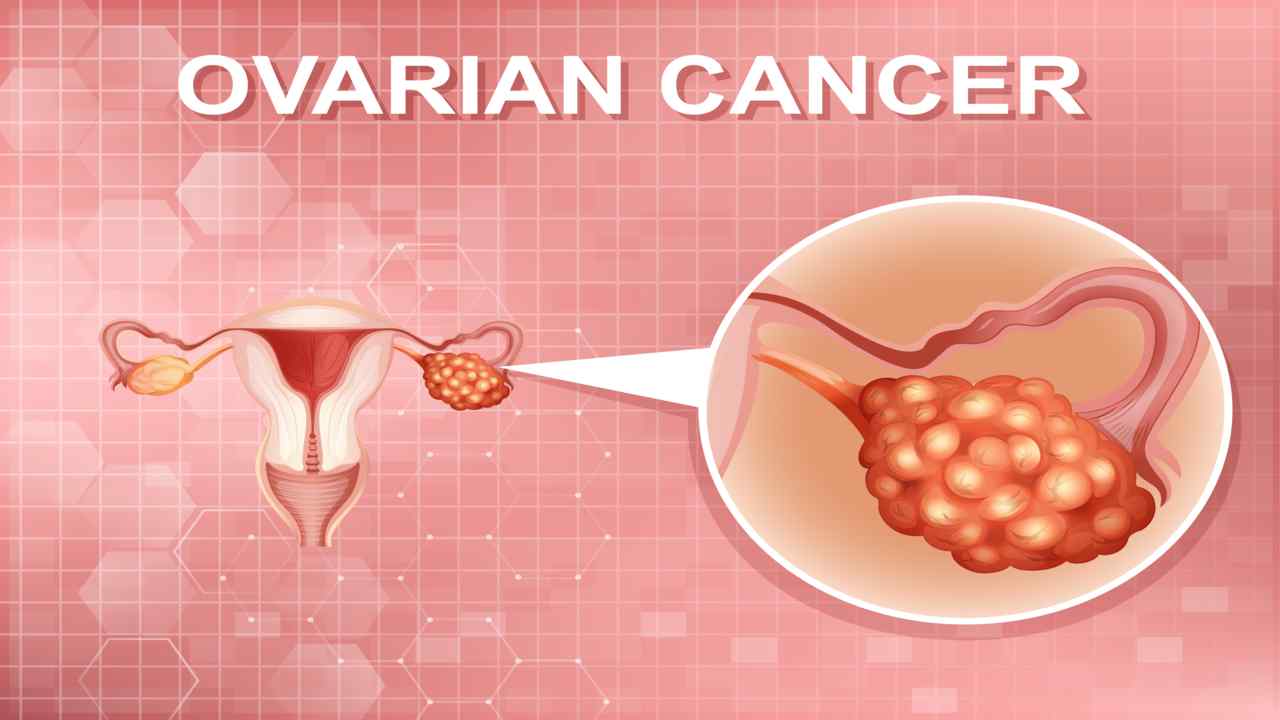As a pediatrician at ONP Hospitals, I’ve witnessed countless stories of resilience and recovery, but one case stands out—little Anaya’s story. Anaya, a spirited four-year-old, came to us after a severe finger injury that happened while she was playing in the backyard....

Overview
The uterine lining (endometrium) is where endometrial cancer develops. Cancer of the uterus is sometimes referred to as endometrial cancer. In addition to endometrial cancer, the uterus may be affected by uterine sarcoma, however, this kind of cancer is far less prevalent.
Because of irregular vaginal bleeding, endometrial cancer is generally diagnosed at an early stage. The uterus may be removed surgically to treat endometrial cancer if it is identified early.
When it comes to gynecological cancer, endometrial carcinoma is the most frequent. Every year, over 50,000 women in the United States are diagnosed with the condition.
Everything You Need To Know About Endometrial Cancer
What is It?
The uterus, the hollow, pear-shaped organ in which a fetus develops, may be affected by cancer. The endometrium is the tissue that covers the inside of the uterus. Endometrial cancer occurs when the lining of the uterus is invaded by cancerous cells. Endometrial cancer accounts for the majority of uterine cancers.
Endometrial cancer can spread to the bladder or rectum, or the vagina, fallopian tubes, ovaries, and other distant organs if it is left untreated. Fortunately, endometrial cancer develops slowly and is typically discovered before it has gone too far by frequent examinations.
Causes
Endometrial cancer is still a mystery to doctors. The endometrium – the lining of the uterus — is thought to undergo a process that results in alterations (mutations) in the DNA of cells.
Normal cells are transformed into abnormal ones by the mutation. At a certain pace, healthy cells proliferate and ultimately die. Unlike healthy cells, abnormal cells do not die at a predetermined period. A mass of malignant tumors is formed. Invading adjacent tissues, cancer cells may then move to other parts of the body (metastasize).
Risk Factors
Endometrial cancer is associated with several risk factors, including:
- Changes in the balance of female hormones in the body: The ovaries produce estrogen and progesterone, two of the most important female hormones. The endometrium changes as a result of changes in the balance of these hormones.
Endometrial cancer is more likely to occur if your body produces more estrogen than progesterone, but not the other way around. Some examples include polycystic ovarian syndrome (PCOS), obesity, and type 2 diabetes. Endometrial cancer is more likely to develop in women who use estrogen-only hormones after menopause.
Endometrial cancer risk may be increased by a rare kind of ovarian tumor that secretes estrogen.
- More years of menstruation: When women begin menstruating before the age of 12 or enter menopause later in life, they are at greater risk of developing endometrial cancer. For every additional period, your endometrium is exposed to more estrogen.
- Never having been pregnant: Endometrial cancer is more common in women who have never given birth than in women who have given birth at least once.
- Older age: Endometrial cancer is more common as you become older. After menopause, women are more likely to develop endometrial cancer.
- Obesity: Endometrial cancer is more common in obese women. This may be due to an imbalance in your body’s hormones caused by obesity.
- Hormone therapy for breast cancer: The risk of endometrial cancer may rise if a woman takes tamoxifen for breast cancer treatment. Take your doctor’s advice and discuss this risk if you are taking tamoxifen. Tamoxifen’s advantages far exceed the minor risk of endometrial cancer for the vast majority of women.
Symptoms
Abnormal vaginal bleeding is the most prevalent sign of endometrial cancer. This might include, but is not limited to:
- Changes in the duration or heaviness of menstrual periods
- Between menstrual cycles, there is vaginal bleeding or spotting.
- Vaginal bleeding after menopause
Endometrial cancer may cause other symptoms, such as:
- Vaginal discharge that is blood- or water-tinged
- Lower abdominal or pelvic pain
- Coitus induced pain
Treatments
Individuals suffering from endometrial cancer may benefit from any combination of the following treatments.
- Surgery: There are a variety of surgical procedures available, including as
- Hysterectomy – Remove the uterus with surgery.
- Salpingo-oophorectomy – Procedure to remove the ovaries and fallopian tubes.
- Pelvic lymph node dissection – Excision of a few lymph nodes from the lower abdomen.
- Para-aortic lymphadenectomy – A procedure to remove the lymph nodes that surround and protect the coronary artery.
- Laparoscopic lymph node sampling – Excision of lymph nodes using a laparoscope, a tiny viewing tube placed via an abdominal incision.
- Sentinel lymph node mapping – Using fluorescence imaging to discover lymph nodes that may otherwise go undiagnosed as malignant.
- Radiation therapy: The application of X-rays, gamma rays, and charged particles in the treatment of cancer. Brachytherapy and external beam radiation are the most often utilized radiation treatments to treat endometrial cancer, with external beam radiation being the most prevalent. Improved patient outcomes and fewer side effects are possible with novel approaches in image-based brachytherapy under the supervision of directed magnetic resonance (MR).
- Chemotherapy: Treatment of malignant cells using anti-cancer medicines.
- Immunotherapy: Activate the body’s inherent potential to combat cancer by stimulating the immune system.
- Hormone therapy: Hormone-disrupting drugs or surgical interventions.
Conclusion
If you are experiencing symptoms that might be indicative of endometrial cancer or another gynecological issue, schedule an appointment with our specialist doctor. Early diagnosis and treatment may assist to improve your long-term prognosis if you are diagnosed and treated early.
Sub Services
What Patient has to say about us
People heavily rely on reviews from other patients when choosing a healthcare provider
Our Patients Many many happy returns of the day......... The best doctor in the world My mother was suffering from severe pain in both knees and spine. Dr. Aashish arbat sir has operated today after 15days she is doing every thing thank you Dr aashish arbat sir and team Especially the major support was from Dr Ram sir from admission to dischatge and follow ups and taken care very nicely thanku Dr. Ram sir Our Patients After enduring knee pain for the past decade, my mother sought advice from various doctors in Nagpur, Nashik, and Pune. They all recommended knee replacement surgery, but it was only when we discovered Dr. Aashish Arbat and the option of robotics surgery that we made the decision to proceed. The surgery took place on June 23, 2023, and it turned out to be an incredible experience. To our astonishment, on the morning of June 24, my mother was able to stand on her own legs and even take a few steps. This remarkable progress was made possible due to the advanced assistance of robotics arm and Artificial Intelligence. Dr. Aashish Arbat is an exceptional and highly experienced surgeon, and we are immensely grateful for his expertise. We also extend our appreciation to his colleagues, Dr. Sharma and Dr. Ram, for their excellent skills and compassionate nature. Our heartfelt thanks go out to the entire team for enabling my mother to live a pain-free life Our Patients My mother got her both robotic knee replacement from sir on Oct 2021. The team and sir have made the complete process seamless. Especially my mother was very comfortable post her surgery. Thank you Dr Arbat and team. Our Patients Our Patients Our Patients Hello. My wife has severe arthritis in her body knees since 2017. We communicated many doctors but she was not happy. We visited Dr arbat for same issue and he came up with robotic knee replacement solution which suited her accurately and she is walking 5-6km daily without hesitation and living comfortably. Thanks Dr. Aashish Arbat and his new technology.![]()
Chhaya Kate
![]()
pravin kharat
![]()
T Srivalli
![]()
Mohan Satavekar
![]()
VIVEK PANDEY
![]()
Subhash Bobade
Blogs
Addressing Childhood Obesity: Preventative Measures and Healthy Lifestyle Choices
Childhood obesity is growing concern. More kids are affected every year. Tackling this issue early is crucial. This ensures children grow up healthy and happy. Fortunately, there...
Healthy Sleep Habits for Children: Tips for Parents
Good sleep is essential for children’s health and development. Yet getting kids to sleep can sometimes feel like an uphill battle. Establishing healthy sleep habits early on sets...
The Role of Diet and Nutrition in Managing Encopresis in Children: Insights from Dr. Amita Phadnis
Encopresis, a condition characterized by involuntary soiling in children, can be distressing for both the child and their family. First and foremost, complete treatment of...
Videos
Dr. Amita Phadnis’s Full Speech on Survival & Health Rights at UNICEF India.
Dr. Amita Phadnis ,M.D., Gave a Motivating Speech
Breast cancer is cancer that forms in breast cells. Women are mostly diagnosed with this cancer. Although it can be seen in both men and women
What is AMH
The granulosa cells in your ovarian follicles create the anti-Mullerian hormone, often known as AMH. According to the American College of Obstetricians and Gynecologists (ACOG), the generation of AMH is a reflection of your ovarian reserve.
FAQ’s
Pregnancy and Migraine Headaches: What Women Need to Know
When you are pregnant or breastfeeding, then you should be aware that migraine headaches are a normal part of the journey. Pregnant women might feel headaches owing to...
What Is the Problem of Orthopedics in Children?
While orthopaedic problems are commonly seen in and associated with the elderly, it’s important to be alert regarding the fact that they can afflict young people and children as well.
All You Need to Know About Reproduction
Most science students have to study about reproduction in their high school syllabus, and some learn from their parents, who may discuss it even earlier. It’s a very good thing to know about our own bodies…
Explore All Departments

ONP Prime

ONP Leela

IVF

Oncology

Pediatrics

Urology

Neonatology

Ophthalmology

Orthopedics

Gynaecology

Cardiology

IVF

Oncology

Pediatrics

Urology

Neonatology

Ophthalmology





 Home
Home Gynecology
Gynecology






